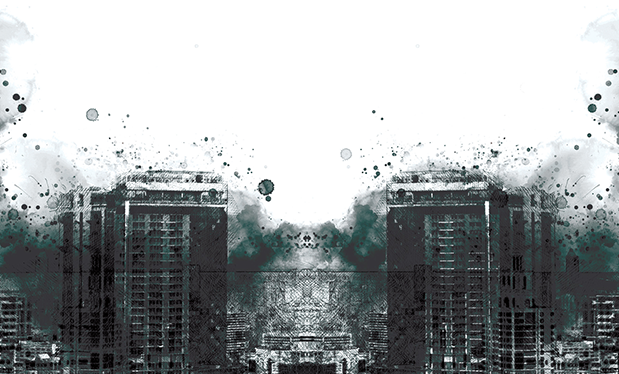Employers should be wary of union activity when completing I-9 forms
Employers seeking to comply with the Trump administration's immigration enforcement efforts by verifying employees' work authorization may face scrutiny from the National Labor Relations Board (NLRB) if union formation or negotiation concurrently is underway.
Most often, verifying employees' work authorization is innocent; the employer is simply trying to comply with immigration law, David Grunblatt, an attorney with Proskauer, Newark, N.J., told Bloomberg BNA. But when employers engage in verification while employees are trying to form a union, the employer's action could be seen as "a sneaky way of trying to intimidate" workers, Grunblatt explains.
For example, meatpacking company Ruprecht Co., Mundelein, Ill., was found to be in violation of the National Labor Relations Act (NLRA) after the company enrolled in the E-Verify electronic employment verification system during ongoing negotiations over a contract with labor union UNITE HERE. Ruprecht enrolled in the E-Verify system in response to an Immigration and Customs Enforcement (ICE) audit of the company's I-9 employment verification forms.
An administrative law judge found Ruprecht violated the NLRA by enrolling in E-Verify without bargaining with the union. Violations also included transferring fired undocumented immigrants' work to contractors without bargaining, dealing directly with the fired workers regarding their severance and failing to provide the union with a list of employees whose employment verification documents were found to be suspect.
In accordance with the 1986 Immigration Reform and Control Act, all employers must ensure new hires are authorized to work. The I-9 form came about as a result of the law; employers must fill out and present the form to ICE when asked. But an inherent conflict exists between checking work authorization and protecting workers' rights, Grunblatt says.
According to former NLRB Chairman Wilma Liebman, "the law's pretty clear" an employer that double-checks workers' statuses and makes immigration-related threats in response to union organizing is engaging in unlawful coercion under the NLRA.
If an employer that normally is lax about completing its I-9 forms suddenly begins doing so after a union organizing campaign is underway, the timing likely will arouse suspicion, Liebman adds.
Grunblatt suggests employers should perform a cost-benefit analysis before reviewing I-9 forms during union organizing. An employer that tries to complete I-9 forms at the last minute in response to an ICE notice of impending inspection is "just trying to mitigate the damage," he says. The employer should let ICE perform the inspection and handle the consequences afterward. And an employer can tell ICE the union prevented it from taking any earlier action against employees with suspect work authorization.
Under a 2011 memorandum of understanding between ICE, NLRB, the labor department and the Equal Employment Opportunity Commission, ICE generally won't conduct an enforcement activity if there is a labor dispute occurring within a company. However, labor disputes often aren't discovered until after ICE begins its investigation, and the agency likely won't suspend an audit in that context.
ICE data show I-9 audits decreased significantly during fiscal year 2017. There were 420 I-9 audits through June 24 during fiscal year 2017, which ended Sept. 30. There were 1,279 I-9 audits during fiscal year 2016.
ICE says it hasn't changed its tactics.
"ICE's Homeland Security Investigations continues to employ a comprehensive worksite enforcement strategy that promotes national security and targets employers who violate employment laws or engage in abuse or exploitation of workers," ICE spokeswoman Danielle Bennett told Bloomberg BNA in an email.
And Liebman doesn't believe a change in labor law will be made.
Labor law tends to favor employers, she explains. Many employers consider penalties for unfair labor practices part of the "cost of doing business" rather than a deterrent, she says.
The U.S. Supreme Court has ruled undocumented workers can't receive back pay for NLRA violations, which does not help those who were fired for union organizing and who happen to be undocumented, Liebman says.
"These issues make union organizing in workplaces with a lot of immigrant workers difficult," Liebman says.
Contractors must comply with OSHA's silica exposure rule
On Sept. 23, the Occupational Safety and Health Administration's (OSHA's) new rule regarding worker exposure to respirable crystalline silica in construction took effect. The OSHA regulation sets out new protocols for minimizing worker exposure to silica that are more comprehensive than the previous rule and will require greater compliance efforts from contractors.
In a Sept. 20 memo to regional administrators, OSHA stated it would "carefully evaluate good faith efforts taken by employers in their attempts to meet the new construction silica standard" during the first 30 days of enforcement. The agency pledged to offer help and outreach to ensure full and proper compliance, especially regarding the new Table 1 approach that specifies engineering controls and respiratory protection for 18 specific construction tasks.
If, upon inspection, an employer was not making efforts to comply with the regulation, OSHA's inspection included collection of exposure air monitoring performed in accordance with OSHA procedures, and employers could receive a citation. All proposed citations related to inspections conducted during the first 30 days of enforcement required National Office review.
NRCA has made available a sample written silica exposure control plan as a customizable Word document contractors may adapt to specify the elements required by the rule to limit worker exposures based on specific tasks workers are performing. Contractors should use the written silica exposure control plan to identify the hazards their workers may be exposed to and the means their companies have established to control the hazards to demonstrate they are ensuring the safety of their workers and others near job sites.
To view the sample written silica exposure control plan, visit NRCA's silica regulation resources webpage by clicking here and select "Sample written silica exposure control plan."
Judge rules no ill will in second OSHA inspection of contractor
Occupational Safety and Health Review Commission Administrative Law Judge Patrick B. Augustine ruled Sept. 5 the Occupational Safety and Health Administration's (OSHA's) second inspection of Elite Builders Inc., Papillion, Neb., was not vindictive and occurred because employees were again working without fall protection. Elite Builders is not an NRCA member.
On June 19, 2015, an OSHA compliance officer observed two roofing workers installing floor joists without fall protection on the second floor of a residential construction project in Omaha, Neb. The workers were working within 2 feet of the roof's edge about 14 feet above ground. Mark Bratetic, owner of Elite Builders, told the compliance officer harnesses and tether lines were not included in his fall-protection plan because they presented a tripping hazard.
In August 2015, another compliance officer observed two roofing workers without fall protection on a roof at least 6 feet high in Papillion. The officer asked the two employees to come down, and they exited the roof on a platform attached to a forklift. Bratetic did not allow the officer to inspect the job site without a warrant; Elite Builders already had finished the work by the time OSHA received the warrant, so the officer returned to the site and took measurements based on his earlier observations.
Augustine found the compliance officers' observations of employees working without fall protection gave the officers an "objectively reasonable basis" to inspect the job sites. Augustine said Elite Builders did not show it was exercising a statutory or constitutional right, which is the basis of such a defense, before the second inspection; although Elite Builders exercised its right to contest the citation and to request a warrant, the actions occurred after the second inspection began and could not form the basis for the company's defense.
The judge affirmed two serious violations for failing to protect workers from fall-protection hazards; one serious violation for failing to train operators of industrial trucks; and one violation of OSHA's general duty clause for the company's failure to protect employees from fall hazards while they were transported via forklift. Augustine rejected Bratetic's tripping hazard argument, saying he could not see how wearing fall protection creates a greater hazard than wearing no fall protection.
The judge vacated four citations, ruling the secretary of labor did not show violations of standards that require fall-hazard training, scaffold training and a qualified person to design scaffolding. The fourth vacated violation for failure to install guardrail systems along the forklift platform was a duplication of the general duty clause violation.
Augustine assessed $9,600 in penalties to Elite Builders; the secretary of labor had sought more than $22,000.
Worker safety violations decreased during fiscal year 2017
Rules to protect construction workers from falls continue to dominate the Occupational Safety and Health Administration's (OSHA's) list of most commonly violated standards though the number of violations dropped during fiscal year 2017. OSHA shared the preliminary top 10 most-cited violations for fiscal year 2017 at the annual National Safety Council Congress in Indianapolis Sept. 26. The violation numbers are preliminary because OSHA inspectors have up to six months following an inspection to issue citations.
Patrick Kapust, deputy director of OSHA's enforcement branch, said there were 6,072 violations of OSHA's fall-protection standard cited during fiscal year 2017 as of Sept. 5 compared with 6,929 during fiscal year 2016. Fiscal year 2017 ended Sept. 30.
Preliminary violation numbers from fiscal year 2017 decreased in each of the top 10 violation categories following years of decreasing total inspection numbers; about 9,000 fewer inspections were completed during fiscal year 2016 than during fiscal year 2011. Fiscal year 2016 preliminary violation numbers also were calculated during a period three to four weeks longer than fiscal year 2017 preliminary violation numbers.
Other construction fall-related violations included ladders, scaffolding and training, according to Kapust. Fall-protection training violations replaced electrical general requirements violations in the top 10 list. Construction site visits account for about half of OSHA's inspections, so it is no surprise construction violations are the most commonly cited.
Following are the preliminary top 10 most-cited violations for fiscal year 2017:
- Fall protection at 6,072 violations compared with 6,929 preliminary violations during fiscal year 2016
- Hazard communication at 4,176 violations compared with 5,677 preliminary violations during fiscal year 2016
- Scaffolding at 3,288 violations compared with 3,906 preliminary violations during fiscal year 2016
- Respiratory protection at 3,097 violations compared with 3,585 preliminary violations during fiscal year 2016
- Lockout/tagout at 2,877 violations compared with 3,414 preliminary violations during fiscal year 2016
- Ladders at 2,241 violations compared with 2,639 preliminary violations during fiscal year 2016
- Powered industrial trucks at 2,162 violations compared with 2,860 preliminary violations during fiscal year 2016
- Machine guarding at 1,933 violations compared with 2,451 preliminary violations during fiscal year 2016
- Fall-protection training at 1,523 violations
- Electrical wiring methods at 1,405 violations compared with 1,940 preliminary violations during fiscal year 2016
Judge strikes down Obama administration's overtime rule
The Department of Labor (DOL) has asked a federal appeals court to dismiss its appeal of a court order blocking the Obama administration's overtime rule following an Aug. 31 ruling by Judge Amos Mazzant of the U.S. District Court for the Eastern District of Texas that struck down the overtime rule.
The overtime rule was released in May 2016 and would have nearly doubled the salary threshold, from $23,660 to $47,476, at which executive, administrative and professional employees are exempt from overtime compensation. Mazzant ruled DOL exceeded its authority by issuing the overtime rule and focused too heavily on workers' salaries instead of their job duties. Mazzant previously had put the overtime rule on hold last year.
The Trump administration is expected to rewrite the overtime regulation. On June 27, DOL requested information from employers and stakeholders regarding overtime exemptions under the Fair Labor Standards Act (FLSA) in preparation for drafting a revised overtime rule. The FLSA generally requires employers to pay workers time-and-a-half wages for all hours worked beyond 40 per week.
During his March confirmation hearing, Secretary of Labor Alexander Acosta implied he might support raising the salary threshold to about $33,000, but it remains to be seen how DOL will update or implement a revised overtime rule.



